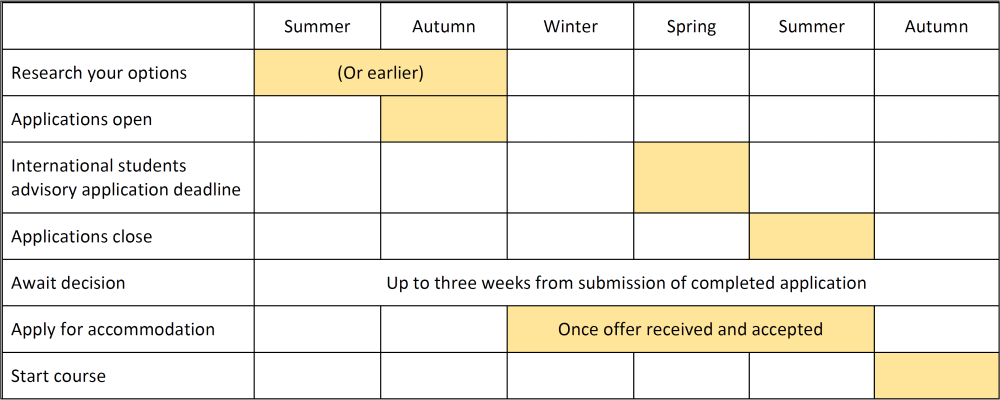- ...
Postgraduate Studentships - Search for funding opportunities.

This guide provides a timeline to starting a Masters explaining what to do when. This is based on the commonalities between most universities, but given things are less standardised a postgraduate level, do double check the details with your preferred universities.
The UCAS system at undergraduate level provides a standardised application process across all UK universities. Achieve the grades required, follow the relevant steps and deadlines, and next thing you know, you’re on your way to your degree. It’s safe to say, things can feel a little hazier at postgraduate level, and in the majority of cases you’ll be applying direct to your chosen university, not through UCAS when starting a masters program.
The government does not set caps on student numbers at masters level as they have done previously at undergraduate level, so as a general rule, if you can prove you have the skills and academic ability to complete the course and there is enough teaching space to accommodate you; you’re in.
Traditionally, masters courses are full-time and last for a year from September/October. Some universities will set application deadlines for late Spring/Summer, but some will allow UK students to apply right up to the start of the course if space allows.
The key thing to remember is that masters study is an open market which means some popular courses fill up early, so it’s always worth applying as early as you can. International students may also find they have to apply by an earlier date in order to enable enough time for visa processing.
Your successful application will enable you to get the essential Confirmation of Acceptance for Studies (CAS) which you will need in order to apply for a UK student visa. Don’t worry if you’ve yet to meet the entry requirements - it’s still better to apply with predicted grades - rather than leave it late.
January start dates are increasingly common for many courses. This is in addition to the usual Autumn start. Recent years have also seen an increase in study mode options with part-time, blended (some face-to-face; some online), and distance learning becoming increasingly available. Some distance learning courses offer multiple start dates through the year.
The chart below gives a rough timeline for a masters starting in September:
-
Before you apply, ensure you’ve identified how you are going to fund not only your tuition fees, but your accommodation and living costs for the year. Government Masters loans are a source of funding for many UK students, but also check out your undergraduate university for any alumni scholarships.
Most universities use an online application portal where you can save your work and complete your application in stages. These are the most common requirements:
You can apply for as many courses as you want, however you need to balance this with the time required to do a good job on each application and the potential administration fee for each course. Like a job application, each will need tailoring to the course in order to be successful.
As a general rule, the earlier you start researching your Masters options, the easier the process will be - and the more confident you can be that you’ve found the right course at the right university for you.
If you didn’t ace those A-levels, masters study can offer the chance to ‘trade up’ to a higher ranked university, as many courses require a 2.1 honours (or equivalent) from a recognised university, so keep your options open at the outset.
The less rigid application process for masters study means that even if your decision to study a masters comes late in the day, you will still have a good chance of finding the right course for you. It’s in a university’s interest to ensure a sufficient number of students are enrolled on each course; you may even get lucky and discover a university scholarship scheme later in the academic year designed to drum up interest if numbers are low!
Good luck!